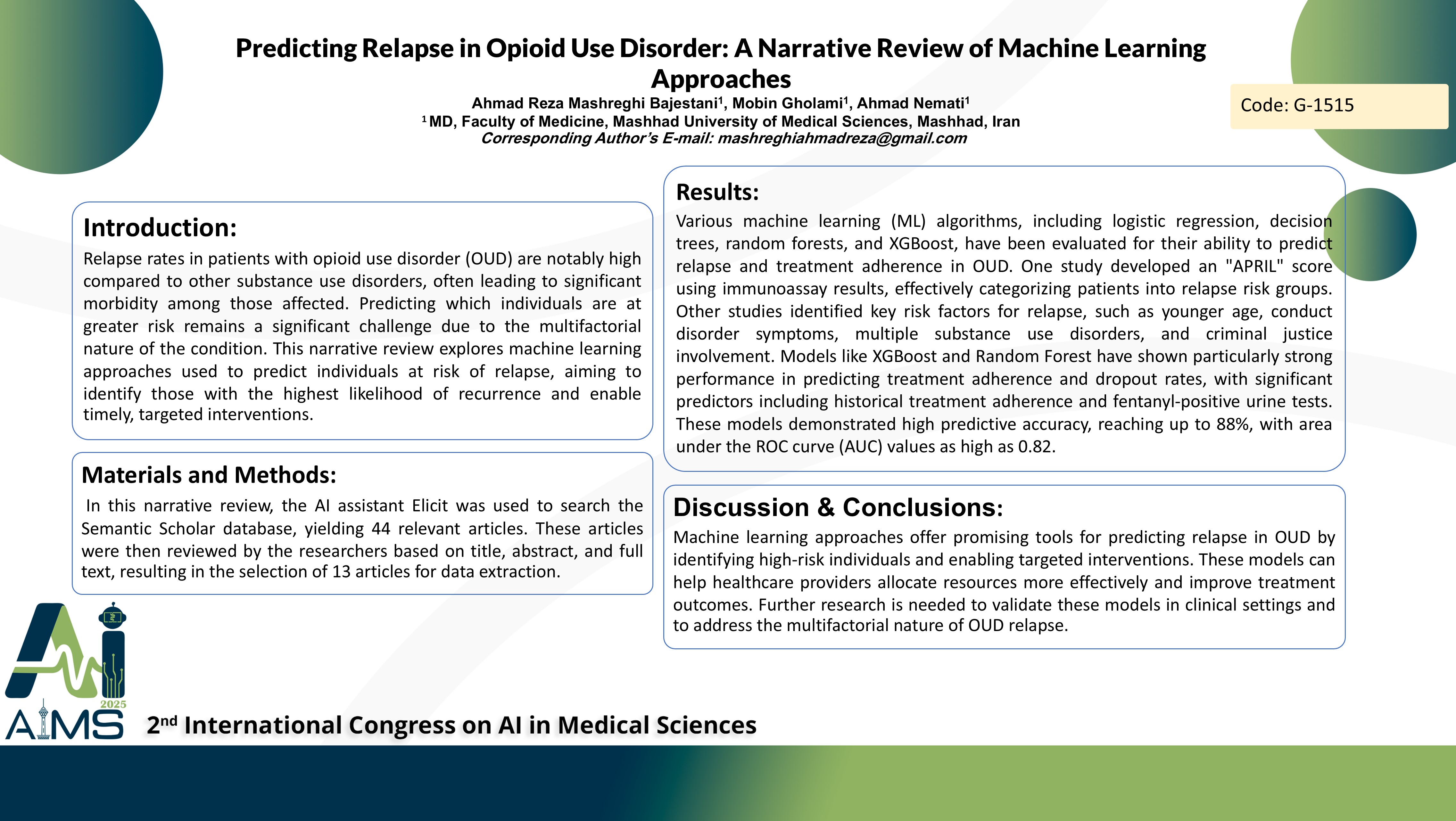پیشبینی عود در اختلال مصرف اوپیوئید: یک مقاله ی مروری از روشهای مبتنی بر یادگیری ماشین
کد: G-1515
نویسندگان: Ahmad Reza Mashreghi Bajestani *, Mobin Gholami ℗, Ahmad Nemati
زمان بندی: زمان بندی نشده!
برچسب: سیستم های تصمیم یار بالینی
دانلود: دانلود پوستر
خلاصه مقاله:
خلاصه مقاله
Background and aims: Relapse rates in patients with opioid use disorder (OUD) are notably high compared to other substance use disorders, often leading to significant morbidity among those affected. Predicting which individuals are at greater risk remains a significant challenge due to the multifactorial nature of the condition. This narrative review explores machine learning approaches used to predict individuals at risk of relapse, aiming to identify those with the highest likelihood of recurrence and enable timely, targeted interventions. Method: In this narrative review, the AI assistant Elicit was used to search the Semantic Scholar database, yielding 44 relevant articles. These articles were then reviewed by the researchers based on title, abstract, and full text, resulting in the selection of 13 articles for data extraction. Results: Various machine learning (ML) algorithms, including logistic regression, decision trees, random forests, and XGBoost, have been evaluated for their ability to predict relapse and treatment adherence in OUD. One study developed an "APRIL" score using immunoassay results, effectively categorizing patients into relapse risk groups. Other studies identified key risk factors for relapse, such as younger age, conduct disorder symptoms, multiple substance use disorders, and criminal justice involvement. Models like XGBoost and Random Forest have shown particularly strong performance in predicting treatment adherence and dropout rates, with significant predictors including historical treatment adherence and fentanyl-positive urine tests. These models demonstrated high predictive accuracy, reaching up to 88%, with area under the ROC curve (AUC) values as high as 0.82. Conclusion: Machine learning approaches offer promising tools for predicting relapse in OUD by identifying high-risk individuals and enabling targeted interventions. These models can help healthcare providers allocate resources more effectively and improve treatment outcomes. Further research is needed to validate these models in clinical settings and to address the multifactorial nature of OUD relapse.
کلمات کلیدی
Opioid Use Disorder, Relapse, Machine Learning
